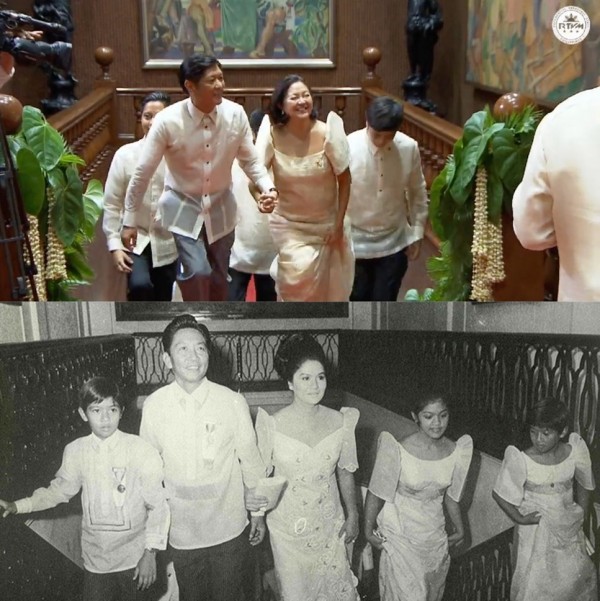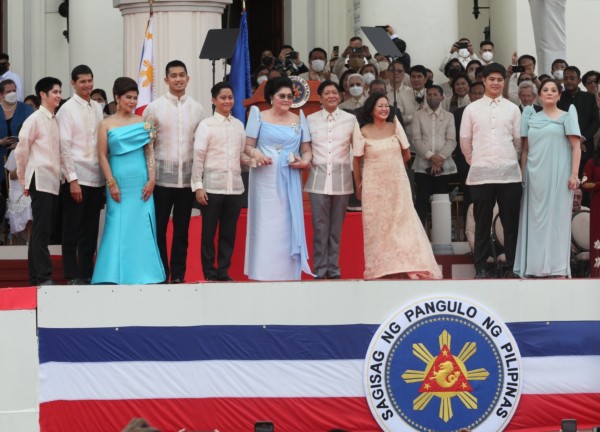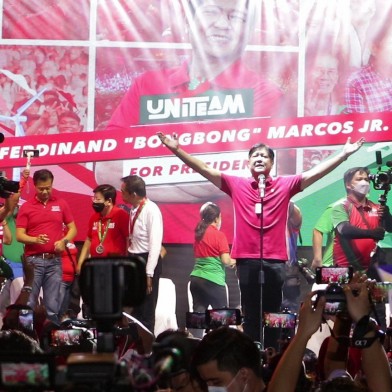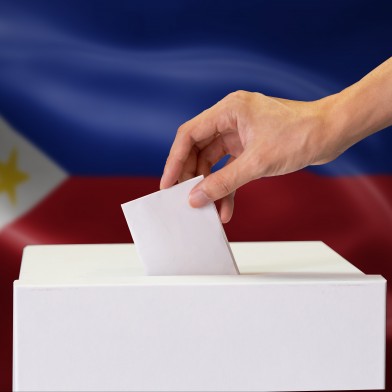Flying into Manila in the Philippines, you’ll land at ‘Ninoy Aquino’ International Airport, named for the rival politician assassinated during the era of dictator Ferdinand Marcos. In Quezon City, you can visit a memorial to the victims of the Marcos regime. And yet, earlier this year, the Philippines elected Marcos’ son Ferdinand ‘Bongbong’ Marcos Jr. as president. Marcus Coll writes on travelling to the Philippines for the inauguration and the history behind President Marcos: take two.
In June, I embarked on a trip to the Philippines. That trip happened to coincide with the inauguration of the country’s 17th president – Ferdinand ‘Bongbong’ Marcos Jr.
May had seen one of the most consequential elections in Philippine modern history: The election of Ferdinand Marcos Jr., commonly known as “Bongbong” or simply “BBM”, as president and Sara Duterte (daughter of former President Rodrigo Duterte) as vice president.
Bongbong’s father, Ferdinand Marcos Snr., presided over the Philippines from 1965 to 1986. His two-decade long authoritarian rule was notorious for its Martial Law, human rights abuses, disappearances, foreign debt crisis, and a declining standard of living.
The Marcos family (including Bongbong) were forced into exile in Hawaii after the EDSA People Power Revolution ousted them from the presidential Malacañang Palace.
Yet 36 years later, Ferdinand Marcos’s only son Bongbong was elected President of the Philippines. Bongbong credited this familial continuity in his inauguration speech stating of his father, “…he got it done; sometimes with the needed support; sometimes without. So will it be with his son.”

Top: Bongbong Marcos returning to the Malacanang Palace with his family after his inauguration. Bottom: Bongbong as a boy alongside his father, mother, and sisters in 1969. Source: Rappler/Twitter
Bongbong won by a landslide securing 58.77 percent of the vote, dwarfing that of his closest rival Leni Robredo on 27.94 percent.
So how did it only take three decades for so many to forgive and forget the Marcos family’s crimes?
During the 1970s and 1980s the Marcoses became infamous for their extravagant lifestyle.
Bongbong’s mother Imelda Marcos, now 93, claimed that her ostentatious living was simply “mothering” to a nation in need. Her $5million shopping sprees to New York and Rome, and collection of over 3000 pairs of shoes supposedly provided a “kind of light, a star” to millions of impoverished Filipinos.
In 1989 Imelda and Ferdinand Marcos Snr. achieved a Guinness world record for the greatest robbery of a government, allegedly having siphoned between 5 to 10 billion USD of the country’s money into their own hands.
To this day the true amount of the Marcoses ill-gotten wealth is unknown. Unashamed in their greed, Imelda later stated, “They found no skeletons, only beautiful shoes.”

The entire family of Bongbong Marcos at his presidential inauguration, including Imelda Maros (centre, in the blue dress). Image: Wikimedia Commons
The memory of the Marcos era is far from uniform. My host mother, for example, said that while she was never a Marcos supporter, she enjoyed the relative peace and stability of the period, albeit under Martial Law.
For other Filipinos, the Marcos name is synonymous with greed, repression, and the disappearance or extrajudicial killing of loved ones.
Others recall the era for its wealth generation, economic prosperity, and ambitious infrastructure projects.
During the presidential campaign, Bongbong tiptoed around this contested legacy. He claimed that he was not dictatorially inclined while almost in the same breath espoused his father for presiding over a “Golden Era”.
At his inauguration Bongbong continued to do the splits by giving odes to the achievements of his father while also stating, “I am here not to talk about the past…We do not look back but ahead.” This cherry-picked nostalgia was effective among those who had never lived through the Marcos era. To many in younger generations, it painted a picture of a glorious past alongside the promise of a bright future: the majority of people aged 25 to 35 voted for Bongbong, the highest out of all age groups.
Bongbong’s campaign tactic was to avoid confrontation with the media by refusing to participate in candidate debates. He gave few interviews, and didn’t outline any concrete policies. While opposition candidates clamoured among themselves, Bongbong avoided slip-ups by relying on the simple term “Unity” spread through his well-oiled social media machine.
The tactic paid off. His inauguration speech was littered with unifying patriotic sentiment and vague promises of a bright future guided by his hand.
But Bongbong’s success was not solely down to his own appeal or his father’s glory. He also rode on the coattails of the ‘Duterte’ name with his widely popular running mate Sara Duterte whose father Rodrigo enjoyed historically high approval ratings as president. The fragmented opposition was no match for the Marcos-Duterte duo and critiques of the past were drowned out.
Reminders of alternative versions of the past are, however, on full display.
I flew into Manila’s ‘Ninoy Aquino’ International Airport, named after Marcos Senior’s biggest political rival. In 1983 Aquino was gunned down on the tarmac at the height of the regime.
The 500 Peso note now bears his face alongside that of his wife “Cory” who became the country’s president after Marcos’ ousting. In Quezon City sits the ‘Bantayog’, a large memorial to victims of the Marcos regime. It consists of a Wall of Remembrance engraved with the many “Martyrs or Heroes” who struggled against Marcos.
Throughout the country, mansions seized from the Marcos family by the government have been turned into public museums displaying the full excesses of the family.
All these visual markers stand as a silent affront to the version of history that Bongbong and his supporters subscribe to. It remains to be seen how these ‘unfavourable’ histories will exist under a Marcos Presidency.
Wall of Remembrance, Bantayog ng mga Bayani, Quezon City. Image: Wikimedia Commons
Democracy calls for acceptance of election outcomes regardless of how controversial. The election has shown that whatever informs the present depends on what individuals choose to forget and remember.
When history is manipulated to meet political ends, the result is a disregard for inconvenient truths and a stifling of any ability to learn from past mistakes.
With the job of redeeming the Marcos family name, a lot of pressure sits on the shoulders of Bongbong to deliver change to the Filipino people over his six-year term. Only time will tell the ways his presidency will be remembered and forgotten.
In the words of Imelda Marcos, “Perception is real, and the truth is not.”
Banner image: Bongbong Marcos raises the hands of Sara Duterte during his inauguration. Source: Wikimedia Commons
- Asia Media Centre


